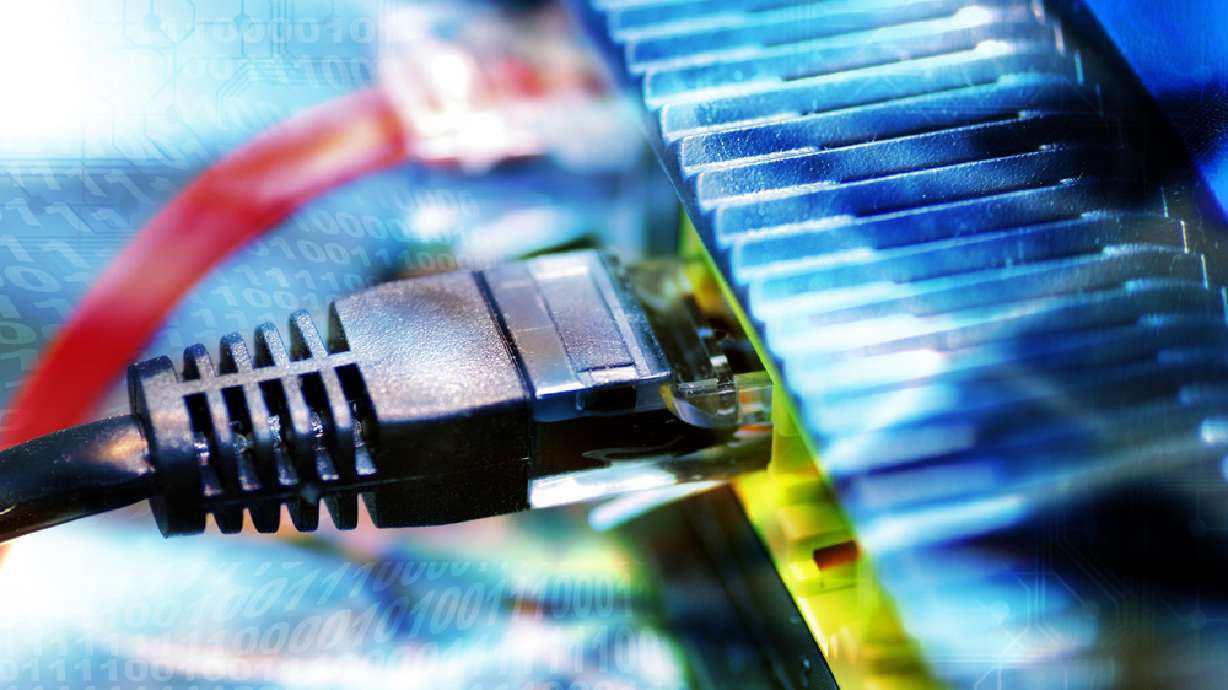Estimated read time: 3-4 minutes
This archived news story is available only for your personal, non-commercial use. Information in the story may be outdated or superseded by additional information. Reading or replaying the story in its archived form does not constitute a republication of the story.
SALT LAKE CITY — There are currently 70,000 households in Utah with limited or no internet access, according to the 2021 American Communities Survey, but the state has just received over $15 million in federal funding for two projects that will help change that.
The first is Connecting Utah, launched Nov. 29 through the Utah Broadband Center, an initiative of the Utah Governor's Office of Economic Opportunity. Connecting Utah will develop a five-year action plan to expand access to affordable high-speed internet in unconnected and underserved areas of the state, according to a news release.
Rebecca Dilg, director of the Utah Broadband Center, said the project received $5 million from the federal Broadband Equity Access and Deployment Program, a $42.45 billion program that helps expand high-speed internet access and use. The program is overseen by the U.S. Department of Commerce and the National Telecommunications and Information Administration.
Additional funds for Connecting Utah came from the Digital Equity Act, which allocated $2.75 billion to three federal grant programs, also overseen by the NTIA. Dilg said the amount of money received from the Digital Equity Act is "not an easy, rounded number."
The second project will expand broadband infrastructure in rural areas of the state, connecting an estimated 3,080 households and businesses, according to a news release. The Utah Broadband Center announced Wednesday that it will be receiving $10 million to fund this work through the Coronavirus Capital Projects Fund as part of the American Rescue Plan.
The Utah Broadband Center has already awarded five rural recipients:
- Box Elder County
- Croydon, Morgan County
- Millard County
- West Mountain, Utah County
- Montezuma Creek, San Juan County
The CFP is a $10 billion program funding projects that enable work, education and health monitoring in response to the pandemic, according to the news release. Utah is among five other states awarded CPF funds.
Connecting Utah
Dilg said her office heard about the broadcast equality program funding a year ago. Following this year's Aug. 15 deadline, it received the funding by November. Utah is one of 14 states and territories that have currently been awarded the funds, she added.
The money is now going toward Connecting Utah's five-year plan, the first step of which involves identifying areas most in need of internet access. Dilg said the state has had internet availability maps for over a decade based on information from internet providers, but now they're hoping community members will visit speedtest.utah.gov to run internet speed tests at their various addresses.
"This gives us another layer of information," Dilg said. "Are these areas actually served? Are they represented?"
She also emphasized the outreach work her office is doing, including workshops, a website and social media campaigns, aided by local consultation firm Horrocks.
The five-year plan also includes implementing internet service in underrepresented areas, Dilg said. They'll provide grants and "have partners in this venture." Their first priority is to get every household connected, she said; then they'll focus on improving speed.
Dilg said especially after the COVID-19 pandemic, nearly everything is done online, from telehealth appointments to driver's license renewals to working remotely. Her team worries about "digital immigrants" — older generations that didn't grow up using technology — and even young people who don't necessarily have all the skills they need to navigate a digital world.
"We envision a digitally connected Utah where all are able to fully participate in modern society," Dilg said.









